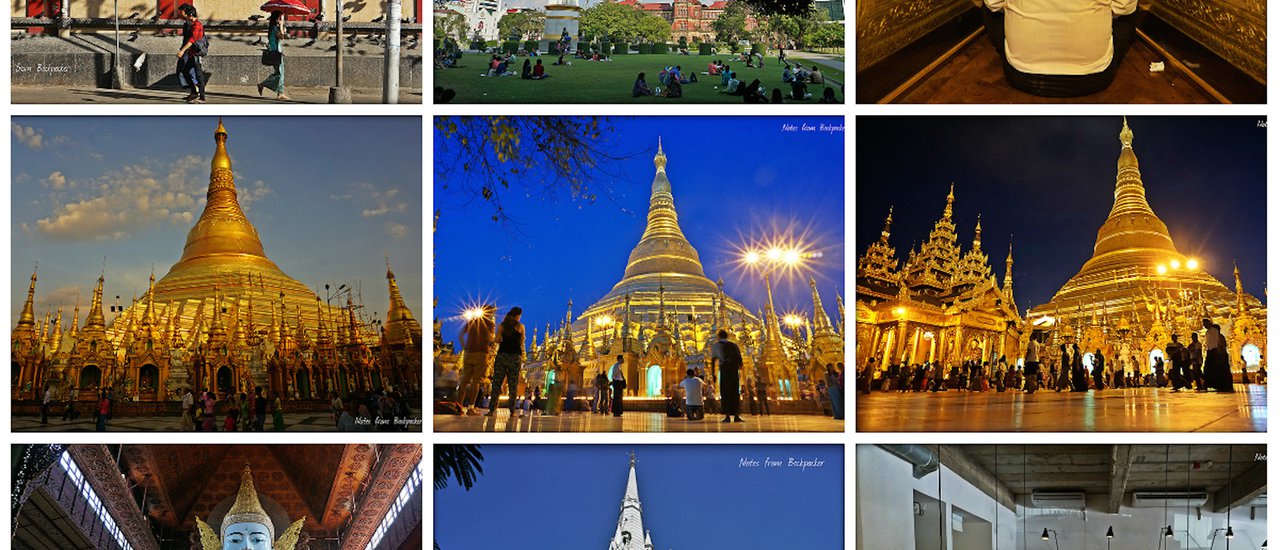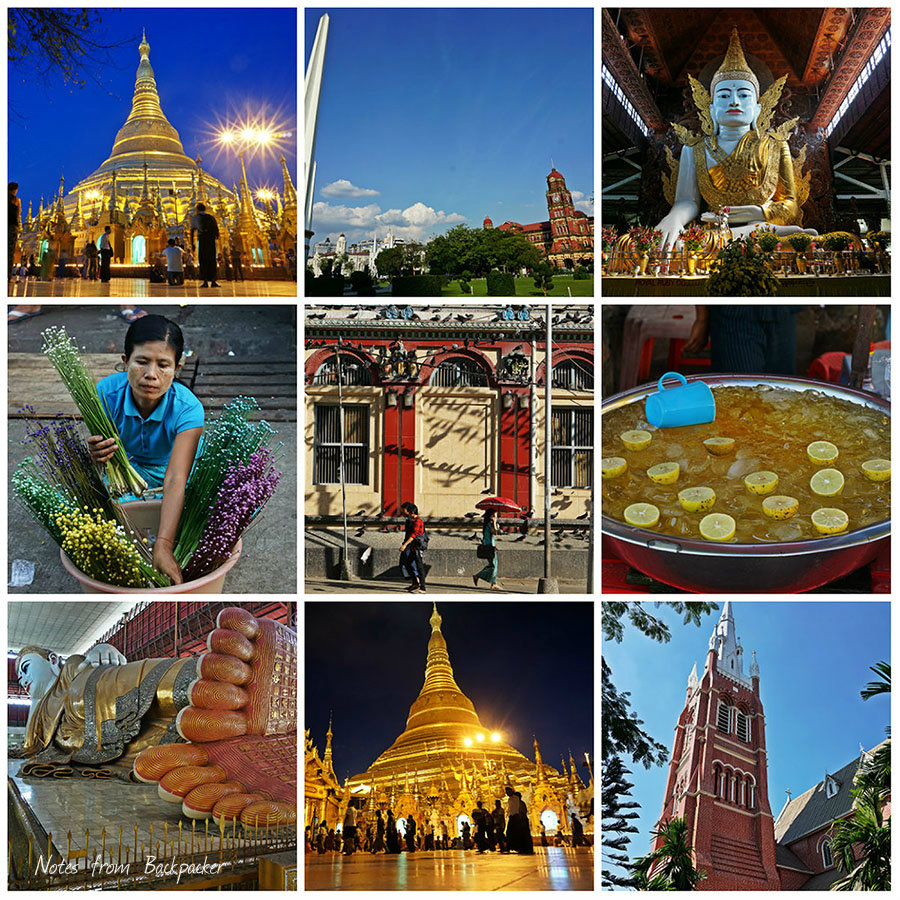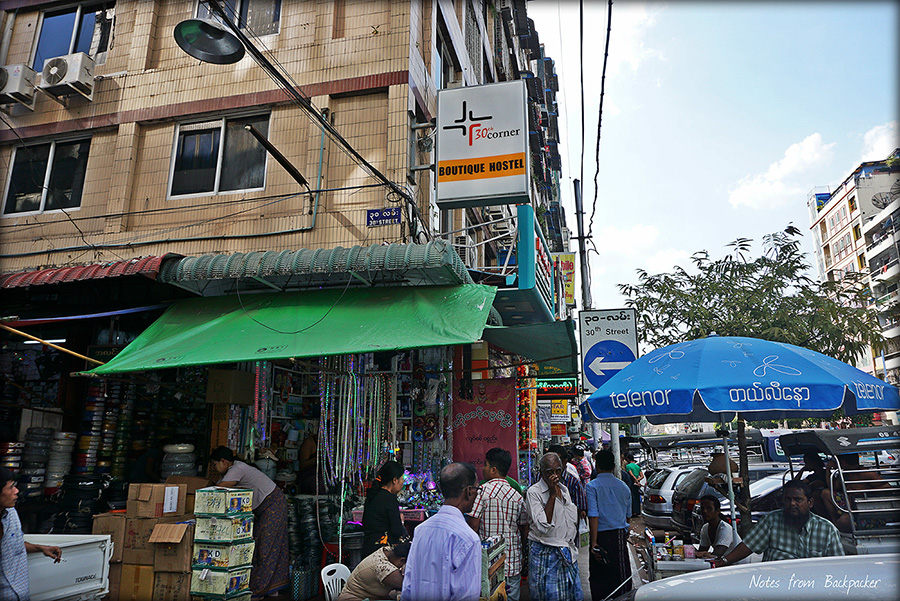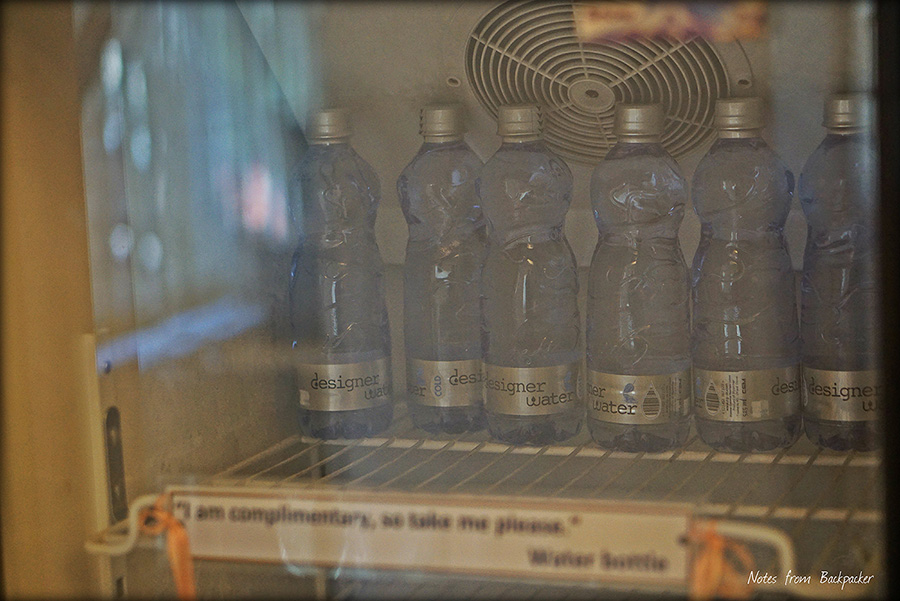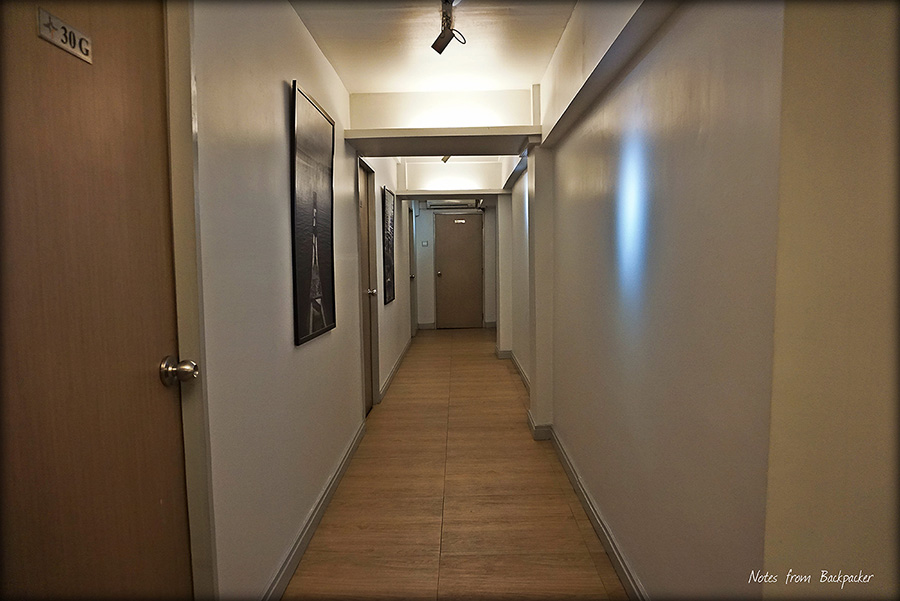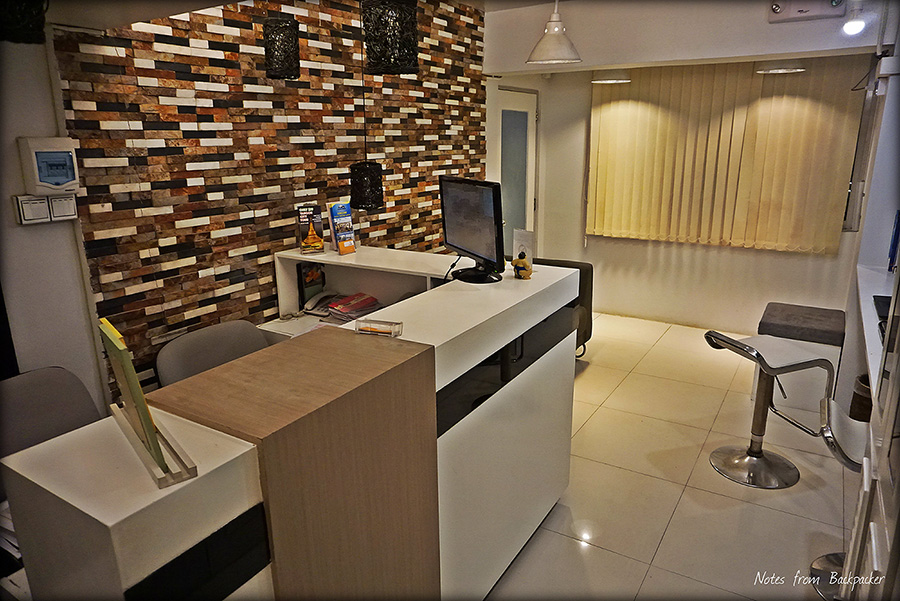
Chapter 1 https://th.readme.me/p/1848
Chapter 2 @ Bagan https://th.readme.me/p/1864
Episode 3 @ Inle https://th.readme.me/p/1871
Episode 4 @ Pyin Oo Lwin https://en.readme.me/p/1872
Episode 5 @ Mandalay-Mingun https://th.readme.me/p/1873
Episode 6 @ Bago-Kyaikh tiyo https://th.readme.me/p/1874
Episode 7 @ Yangon https://th.readme.me/p/1875
We can talk about it here https://www.facebook.com/NotesfromBackpacker/
---------------------------------------------------------------------------------------------------------------------------------------------------
Day 12 Kyaikh tiyo - Yangon
Woke up at 7 am to have breakfast before leaving

The breakfast at the accommodation will include 3 slices of toast, hot coffee or tea, and your choice of fried, scrambled, or boiled eggs.

The bus will stop in front of the ticket booth, which is just a short walk from your accommodation. The ticket booth is located directly opposite the accommodation's restaurant.


The car is comfortable and not too narrow, and the air conditioning is cool. When booking tickets, I chose the rightmost seat because I looked at the map and saw that the sun wouldn't be on this side during the morning journey.
After setting off, they picked up people along the way at intervals, to the point where they had to pull out the reserved chairs to use as extra seats in the middle.
The bus departed at 8:10 AM and arrived at the rest stop at 11:30 AM for lunch. Passengers were given 30 minutes to eat.

I ordered chicken curry for 2,000 kip today.
12.40 p.m. Arrived at Aung Mingalar Bus Station in Yangon after a 4-hour journey. The sun was scorching as usual. As I got off the bus, taxi drivers swarmed around me. According to my research, the fare to Sule should be around 6,000 kyats. However, each driver quoted me 8,000 kyats or 10,000 kyats (with air conditioning). I tried to bargain for 5,000 kyats, but the lowest they would go was 6,000 kyats, which was in line with my research. But then, my cheapskate spirit took over, and I decided to walk out of the bus station and cross the street to catch the bus number 43 instead. It was much cheaper. I waited for less than 5 minutes, and the bus arrived. This time, I recognized the bus, so it was easy.

"I'm sitting on the left side, the sun isn't shining, but why did this trip cost 400 baht?"
2:00 PM. Get off at Sule Pagoda and walk to Anawratha Rd. Walk about 200 meters and you will find Soi 30. Walk past room number 4 and you will see a small sign for the accommodation called 30th corner boutique hostel. The accommodation that is actually on my list is in the middle of the list, but I arrived first, so I decided to check it out. Walk to the 2nd floor and there will be a counter to contact. I went to see the room and agreed to stay in a 4-bed dorm room for 10 USD. The price of other rooms is as follows: Single bed 25 USD, Double bed 35 USD. From the location of the accommodation, you can walk to Scott Market 500 meters, walk to Sule Pagoda 500 meters, and walk to China Town 1.1 km. There are many restaurants in this area.

Walk past 3 rooms from the entrance of Soi 30, and you will find the stairs.

The fourth room from the left with a large green sign above it. Notice the small white sign below with the name of the accommodation. You can walk up.


Contact counter

Free drinking water in a beautiful bottle

Common corridor


The 5-bed dorm room costs 10 USD per night. It is a new, clean room with air conditioning. The bathroom is shared and located outside the room. This price includes breakfast.

There are lockers to store your belongings.
After checking in, I went for a walk to the Sule Pagoda. There was a park next to it, so I stopped by to see it. There were a lot of people there.

Mahabandula Garden is a public park with a monument. Today is Saturday, so there are a lot of people visiting. It's lively.

There is also a children's playground inside.


The European-style buildings were influenced by the British who once ruled here.





I found a foreigner sitting and having his fortune told by a fortune teller at the edge of the public park fence. I guess it must be accurate enough for him to travel a long way to see it. 555


The Sule Paya Pagoda is right next to the park, so I walked to see the view from the top of the bridge and found the entrance. The entrance fee is 4,000 kyats, but the information I found online was only 2 USD.

Villagers are helping to sweep the courtyard around the pagoda.

After that, I walked back to Scott Market. Along the way, I passed through several alleys, each lined with colorful shophouses packed tightly together. The people in this area seemed to be mostly of Indian descent.

The red-roofed building is either the Scott Market or the Bogyoke Aung San Market.

The fabric is beautifully colored.

Despite their crouched positions, they are actually examining and trading gems.
As evening fell, I walked to the China Town area on Mahabandula Road (parallel to Anawratha Road). China Town has the most things to sell in the area between Soi 15-19, but today I only walked around for a short time.


We stopped by a restaurant in Chinatown for a quick bite. I ordered the same dish as the person next to me, which was a stir-fried vegetable mix with glass noodles called Mala He. The meal cost 2,000 kip, which was a lot for the amount of food we received.
After that, I went back to the hotel and sat in the lobby to read a book. Then I went to my room, which was the only one occupied today, so I had it all to myself. 555
---------------------------------------------------------------------------------------------------------------------------------------------------
Day 13 Yangon
I woke up after 8 am and took a shower and packed my bags, not knowing if anyone else would be staying in the room during the day. Then I went down to eat breakfast, which was provided by the accommodation.

It's just plain roti to eat with coffee, very easy ^^ Then I went down to pay for an extra night's stay for 10 USD and asked the accommodation to find a taxi to pick me up tomorrow at 5 am to go to the airport. They charged 8,000 kyats. I didn't want to find one myself outside because it might be cheaper than what the accommodation found, but I was afraid that if I made an appointment, the taxi wouldn't come, so I thought it was better to let the accommodation find one for me. When everything was settled, I walked out to Soi 26 because in the early morning, there is a fresh market throughout the soi. There are goods placed on the floor for sale all the way from the entrance of the soi on the Anawratha Rd. side to the end of the soi on the other side that connects to Mahamandula Rd.


Along the way







In Burma, they also eat fermented fish like we do. That's in the tank.



After that, walk out to Mahamandula Road and find a taxi to Pota Tawng Temple to worship the Thanjai deity.

The car is available for 2,000 kyats.
Botahtaung Pagoda
**History** The Botahtaung Pagoda, which translates to "Pagoda of the 1000 Soldiers," is steeped in legend. According to lore, around 2000 years ago, King Okkalapa of the Mon people commanded his generals to line up and pay homage to a relic of the Buddha's hair. This relic had been brought by two merchant brothers who arrived by ship and landed at the city of Takeng or Dagon, near the present-day location of the pagoda. To commemorate this event, the Botahtaung Pagoda was built, and one strand of the Buddha's hair was enshrined there before being taken to the Maha Wizaya Pagoda and other important pagodas. The Botahtaung Pagoda thus became one of the most revered pilgrimage sites for the Mon and Burmese people. During World War II, the original pagoda was destroyed by Allied bombs during the bombing of Rangoon. However, during the reconstruction, a stupa-shaped reliquary containing a relic of the Buddha's hair and other sacred relics was discovered.
When the new Bodh Gaya stupa was completed in 1953, the relics were placed in a glass reliquary in the center of the stupa. A passageway was created so that Buddhists could walk in and pay their respects up close.
In addition to the sights to see in the Bodaw Pagoda compound, there is also a golden Buddha statue enshrined in the viharn on the right side. This Buddha statue is in the Mara-Vijaya posture and is of exquisite beauty. According to history, it was once enshrined in the Mandalay Palace. When Burma fell under British colonial rule in 1885, it was moved to the Calcutta Museum in India, thus escaping the Allied bombing of the Mandalay Palace. Later, in 1945, this Buddha statue was exhibited at the Victoria and Albert Museum. In addition to the golden Buddha statue, there is also a glass case containing a crystal tooth relic, located near the Golden Buddha Viharn. On the left side, there is a statue of Nat Bo Bo Gyi, or the Instantaneous God, who is widely worshipped by the Mon and Burmese people. It is believed that if one makes a wish to him, it will be granted immediately.

The entrance fee is 3 USD or 4,000 Kyat. I checked the currency exchange rate app and found that paying in USD is slightly cheaper, but I chose to pay in Kyat because I wanted to use it.
Spend all the money.



Upon entering, you can join the queue to pay respects to the Phra That.

Hair Relics


Inside, people are sitting and chanting in various corners of the golden room, which is both beautiful and peaceful.
After that, just keep walking and you will find the exit next to the Pota Town Pagoda. From here, walk and you will find a path across a small pond in the temple. There is a Than Jai deity at this pavilion. During this time, buy a small set of offerings for 3,000 kyats and then stand in line to worship and ask for blessings from Than Jai. The steps are not difficult. Just roll up 2 bills (but if you want to leave them for someone else, do it in advance. I will leave them for 2 other people, so I have to do a total of 3 pairs, and each pair must be stacked together). When it's your turn, raise the offerings and present them, then insert the rolled-up bills into the right hand of Than Jai (the pointing hand). Then touch your forehead to the tip of Than Jai's pointing finger and clasp your hands to make a wish. Once you have finished making your wish, take out the top stacked bill and keep it for good luck. Then take out the canvas cloth in the offering tray and drape it over the



After exiting the same way you entered to pay respects to the Phra That, there will be a building on the opposite side to pay respects to the Whispering God.

After that, I walked out of the temple. At the entrance, there were taxis. I asked about the price to go to Wat Ngathutchi. The price they offered was 5,000 kyats, which was too expensive. So I crossed the road and waited to hail a taxi. I got one for 2,500 kyats, which was half the price. It only took 10 minutes to get there.
Nghatatgyi Pagoda
Admission is free here.
History Luang Pho Ngatatji, which means "Luang Pho as tall as a 5-story building", is a Buddha statue in the Mara-Vijaya posture carved from marble. He is dressed in royal attire, with metal ornaments and a wooden pedestal carved with various patterns. The design is inspired by the royal Buddha statues of the Yatanabon period (Mandalay period).




After crossing the road, walk another 400 meters to reach the Chauk Htat Gyi Pagoda. According to the information I found, the entrance fee is 2 USD, but I didn't see any staff collecting it or any ticket booths, so I just let it go. ^^
Chauk Htat Gyi Pagoda
History Chaukhtatgyi Temple, or Chaukhtatgyi Buddha or Sweet Eyes Reclining Buddha, is a large reclining Buddha statue over 70 meters long located in Yangon. It is the largest reclining Buddha in Myanmar. Thai people call it the Sweet Eyes Reclining Buddha because in addition to the beautifully painted eyes of the Buddha statue, it also has beautiful eyelashes. The pupils are made of special glass imported from Japan, making them look alive as if they were being nourished by water. In addition, the robe is decorated to look as beautiful and flowing as a real robe. Under the feet, which are not placed evenly, there are beautiful patterns drawn, which are auspicious symbols, including the Dharma Wheel, 108 auspicious symbols, representing the three worlds: 59 symbols representing the air world, 21 symbols representing the animal world, and 28 symbols representing the world of formations. There are also symbols of the Chakravartin king included in it.

Entrance

In the center of the footprint and surrounded by 108 auspicious symbols.

According to the nickname that he is the sleeping Buddha with sweet eyes, but I think his face is sweeter.

The original image will be in the picture.

The day I went, there was a performance. I don't know if there is a performance every day or if the day I went was a special day.



After finishing, walk across the street and there will be a tent selling rice for 1,500 kyats for this meal. After lunch, walk across the street to the front of the temple and hail a taxi to Scott Market for 2,500 kyats. It takes less than 20 minutes to get there.
Before reaching the Scott Market, there is a church right next to it, so I asked to get off here and walk in to take a look. This is the Holy Trinity Anglican Church. When I went in, there was a ceremony going on.




Walk up to Scott Market or Bogyoke Aung San Market
History Scott Market (Scott Market) or also known as Bogyoke Aung San Market (Bogyoke Aung San Market), the most famous shopping place in Myanmar. It is a center of all kinds of souvenirs. It is a market with a wide variety of products, ranging from various kinds of food, clothing, souvenirs, silverware, gems, sandalwood Buddha statues, carvings, gold-plated lacquerware, antique Chinese bowls and cups, cut glass lamps and antique vases, old wristwatches, various silk patterns to various herbs such as Hongsawadi herbs, oil paintings of Burmese landscapes, products from ethnic minorities, etc. This market was built by Mr. Scott, an Englishman. Scott Market is the largest market with many buildings connected together. There are almost all kinds of products for sale.





After searching for the blanket that my mother asked me to buy but couldn't find it, I walked to the building next door, which is the Parkson department store. In front of the Parkson department store, there are 2 coffee shops. I went into the shop on the right, which is beautifully decorated. The shop is called Barboon Dutch Deli Espresso bar. I wanted to sit and rest in a beautiful shop for a while. The shop was full of people, mostly tourists. I ordered a large iced espresso for 3,300 kyats (140 baht). The price is quite reasonable. ^^





Across the street, there's a KFC where I stopped to eat on my first day in Burma.
After sitting for a while, I walked back to the accommodation to charge the camera battery because in the evening I had to go to Shwedagon Pagoda and then walk to Chinatown. When I arrived at the accommodation, the staff at the counter informed me that they had moved my luggage to another room because the room I stayed in yesterday, which had 5 beds, was occupied by a group of 4 women today. They were afraid that I would feel uncomfortable, so they moved my belongings to a twin bed room with another man (how did they know I would feel uncomfortable? I wish they had asked me first! 555)

A new room with twin beds. I put my things away and immediately charged the camera battery. I took a nap for a while.
4:00 p.m. I walked down to find a taxi to Shwedagon Pagoda for 2,000 kyats. It was my first time in Myanmar to ride in a taxi with cool air conditioning. I didn't want it to arrive too soon. After a while, the car stopped at the entrance of the pagoda on the side with the elevator, but I didn't take the elevator. I walked up the stairs as usual and then I found a booth selling entrance tickets. I paid 8,000 kyats per person for the entrance fee. Today I wore shorts and forgot to bring a longyi. But luckily, they had longyi for sale or rent at the booth. I chose the latter, but I had to pay a deposit of 5,000 kyats. I will get the deposit back when I return the longyi.
Shwedagon Pagoda
History The Shwedagon Pagoda is a religious site and a sacred landmark of the Burmese people. It is located on Singuttara Hill in Yangon, Myanmar. It is believed to be a great pagoda containing eight strands of the Buddha's hair. The word "Shwe" means gold, "Dagon" is the old name of Yangon, and "Taikong" means gold of Dagon.
The Shwedagon Pagoda has a long history of over 2,500 years, dating back to the time when Yangon was still a Mon city. According to legend, two Mon merchants named Tapussa and Bhallika traveled to India to trade. They had the opportunity to meet the Buddha, who was sitting under the Bodhi tree, and offered him food. After the Buddha finished eating, he gave them eight strands of hair. When Tapussa and Bhallika returned, the king of Aketta asked for two strands of hair, and the naga asked for another two. When they arrived in the city of Asitanchana, King Okkalapa held a grand ceremony to welcome the hair relics.
The location chosen for the construction of the stupa was on Mount Singhakhutta, outside the city gate of Asitanjana. The stupa was built to enshrine the Buddha's hair relics. However, during the excavation for the construction, the relics of three other past Buddhas were also discovered: a wooden alms bowl, a water vessel, and a robe. These were all enshrined in the stupa along with the Buddha's hair relics. Before the relics were enshrined, it was discovered that the Buddha's hair relics had miraculously multiplied to eight strands. The relics were then enshrined in a series of stupas made of gold, silver, tin, bronze, lead, marble, and iron, respectively. Finally, a nine-meter-high brick stupa was built over the top of the other stupas.
Later, Phraya U of Hongsa extended the chedi by 22 meters. The chedi has been repaired continuously until it reached a height of 120 meters. During the reign of King Mangra in 1730, there was a severe earthquake that caused the top of the chedi to collapse. The Burmese government and the people helped to donate to raise a new umbrella as seen today.
Inside the Shwedagon Pagoda, there is a prayer ground (inside the star-shaped tile) where Burmese people believe that if they come to pray for anything, it will be granted. There are pagodas surrounding the Shwedagon Pagoda, which visitors must take off their shoes every time they enter. And when you arrive at the entrance, walk clockwise, depending on the birthday of the visitor, which will be based on the 12 zodiac signs. There are also small shrines around the pagoda.

Entrance

Ticket

The golden aura is beautiful. I really like it.


Pouring water on the Buddha statue for my birthday, the number of times is equal to my age + 1. My arms are so tired ^^

It was warm at the Shwedagon Pagoda and I met a lot of Thai people ^^




For those visiting Shwedagon Pagoda, I recommend coming in the late afternoon until early evening. This way, you'll get to see the view from the time the sky is still blue until it gets dark and the lights turn on, making it a truly worthwhile experience.
After being there from 4 pm to almost 8 pm, I walked out the same way and there was a taxi parked by the stairs, so I went in and agreed on a price of 2,000 kyats to go to Chinatown. This one also had the air conditioning on full blast, as usual, but this time it was worth the money because the traffic was bad. It took 30 minutes to get to Chinatown, and I asked to be dropped off near the entrance of Soi 19 because this soi has more Burmese barbecue vendors than anywhere else.









I ordered 6 skewers of pork skin for 600 kip each, 3 skewers of pork belly barbecue for 600 kip each, 500 kip for sausage, 500 kip for Chinese sausage, 200 kip for okra skewers, and then ordered blood soup from the shop opposite with plain rice. This meal cost a total of 4,200 kip. The taste was good enough to eat, but the atmosphere was great ^^
Walking back to my accommodation, I came across a dessert shop and decided to stop by for a taste. I ordered a Faluda, which cost 1,300 kyats. It was incredibly delicious and refreshing, perfect for the hot weather. It was like a sundae made with fresh milk, custard, jelly, topped with ice cream and drizzled with fresh milk. Two ice cubes were added and stirred to make it extra cold. I slowly scooped it up and savored the refreshing taste.


After finishing the ice cream, I walked back to the accommodation and chatted with my new roommate for a while. He was a young man from Japan who was backpacking and started from Thailand. He took a bus from Thailand to Myanmar and arrived in Yangon. He planned to continue by bus to Inle and Bagan, then take a bus from there through Shan State (Tai Yai) and enter Laos without passing through Thailand. After listening to him, I suggested that he should ask the staff at the counter for advice as they would be able to recommend a route for him since he didn't have any information. It turned out that after asking the staff for advice, they didn't recommend him to go because he had to take a bus through an area with a dispute between ethnic minorities and the Burmese military, which was quite dangerous. So we helped him to suggest using the original route back to Thailand first and then enter Laos again. I don't know if he will listen or not, but I hope he will be lucky. After that, I gave the Japanese guy information about the buses between Mandalay, Inle, and Bagan, and then I excused myself to take a shower and go to bed because I had to wake up early the next morning to go to the airport.
---------------------------------------------------------------------------------------------------------------------------------------------------
Day 14: Yangon - Bkk
4:30 AM: I woke up, took a shower, packed my things, and rushed down to the counter. Looking out the window, I saw a taxi parked there. I asked the staff and it was indeed the right one, so I got in. On the way, the driver saw a foreigner standing by the road, waiting for a ride. He stopped to pick him up and then drove like a maniac. The roads were empty, so he must have been enjoying himself.
5:15 AM: I arrived at Yangon Airport and paid the same fare as before, 8,000 kyats. As I walked into the terminal, there was a screen inside showing the status of each flight. My flight was not yet open for check-in, so I took my bags to be scanned and tagged, both the big backpack and the small one. Then I went to sit and wait inside until it was time to check in.

credit : yangon.net
The Nok Air check-in counter is located on the far right.
6:05 AM check-in took only 5 minutes and there were few people, so it was comfortable. After that, I walked to the left and there was an escalator to go upstairs. There were shops selling various items. After using the restroom, I went to get coffee. There was a nice cafe nearby called Expace Cafe. I ordered a hot cappuccino for 5 USD, which was expensive as expected. I sat there for a while and then went to scan my bag and went to sit and wait at the gate. The seats were large and comfortable, and the air conditioning was very cold. There are no shops inside the gate like at airports in our country, so if you want to eat breakfast, do it before entering the gate, or eat in Thailand. And when I submitted my departure documents, I was supposed to pay a departure fee of 10 USD, but I didn't get charged, so I guess they stopped collecting it.

Please fill out the document completely.

Looking for coffee to drink in the morning while waiting

Waiting seats in Gate credit : Myanmar.net
7.40 a.m. boarding time, even though it's an early flight, the passengers are full.



10.00 a.m. to Don Mueang Airport
I hope this information is useful for those who read it.
This trip is complete. I will find time to go back again when I am free.
Thank you, Myanmar, for being close enough to visit easily without tiring travel.
Thank you to the Burmese people who helped me when I was confused and disoriented.
Thank you to the notebooks, pens, and cameras that helped record these different things.
Thank you and see you in Myanmar ^^
Notes from Backpacker
Friday, September 27, 2024 9:54 AM

